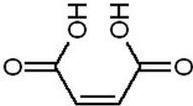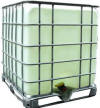|
Mubychem Group, is a mature manufacturing company since generations. Engaged in manufacture and supply of Pharmaceutical Intermediates and Excipients, Fragrance & Flavor chemicals, Oil field and fracturing chemicals, Specialty tailor made grades of chemicals in India. With several manufacturing facilities in India and world wide contacts and toll manufacturers we are exporting to all the countries in the world.. |
The company and associated units have certificates & accreditations like FDA - GMP approval; ISO-9001:2008 Certified; "REACH" Pre-registered; ISO-22000:2005; Kosher Certified; Halal Certified; HACCP. We offer Commercial Pure & Pharmacopoeia IP BP USP FCC Food Grade ACS AR Analytical Reagent Grades of Chemicals |
|
Maleic Acid Manufacturers, SDS MSDS Sheet
Maleic Acid
BP USP IP FCC Food grade
MSDS
of
Maleic Acid
BP USP FCC Food grade Manufacturers
Maleic Acid SDS MSDS Sheet, Material Safety Data Sheet
1. Product Identification
Synonyms: (Z)-Butenedioic acid; cis-butenedioic acid; maleinic acid, toxilic acid
CAS No.: 110-16-7
EINECS EC Number: 203-742-5
Molecular Weight: 116.08
Chemical Formula: HOCOCH:CHCOOH
2. Hazards Identification
GHS, Globally Harmonized System Classification in accordance with 29 CFR 1910
Classification according to Regulation (EC) No 1272/2008
Acute toxicity, Oral (Category 4), H302
Skin irritation (Category 2), H315
Eye irritation (Category 2), H319
Skin sensitization (Category 1), H317
Specific target organ toxicity - single exposure (Category 3), Respiratory system, H335
Labeling according to GHS & Regulation (EC) No 1272/2008
GHS Label Elements  Irritant |
Signal Words: Warning
Hazard statements:
H302: Harmful if swallowed.
H315: Causes skin irritation.
H317: May cause an allergic skin reaction.
H319: Causes serious eye irritation.
H335: May cause respiratory irritation.
Precautionary statements:
P261: Avoid breathing dust/fume/gas/mist/vapors/spray.
P264: Wash … thoroughly after handling.
P270: Do not eat, drink or smoke when using this product.
P272: Contaminated work clothing should not be allowed out of the workplace.
P280: Wear protective gloves/protective clothing/eye protection/face protection.
P330: Rinse mouth.
P362: Take off contaminated clothing and wash before reuse.
P501: Dispose of contents/container to authorized agents only.
P301+312: IF SWALLOWED: Call a POISON CENTER or doctor/physician if you feel unwell.
P302+352: IF ON SKIN: Wash with soap and water.
P333+313: If skin irritation or a rash occurs: Get medical advice/attention.
P305+351+338: IF IN EYES: Rinse cautiously with water for several minutes. Remove contact lenses if present and easy to do – continue rinsing.
P337+313: If eye irritation persists get medical advice/attention.
Classification according to EU Directives 67/548/EEC or 1999/45/EC:
Xn Harmful R22
Xi Irritant R36/37/38
R43
For the full text of the H-statements & R-phrases mentioned in this Section, see Section 16.
3. Composition/Information on Ingredients
Ingredient: Maleic Acid
CAS No.: 110-16-7
EINECS EC Number: 203-742-5
Percent: 100%
4. First Aid Measures
Always seek medical attention after first aid measures are provided.
Inhalation: If Maleic Acid is inhaled, remove to fresh air. If not breathing, give artificial respiration. If breathing is difficult, give oxygen and get medical attention immediately.
Ingestion: Induce vomiting immediately as directed by medical personnel. Never give anything by mouth to an unconscious person. Get medical attention.
Skin Contact: Immediately flush skin with plenty of water for at least 15 minutes while removing contaminated clothing and shoes. Get medical attention. Wash clothing and shoes before reuse.
Eye Contact: Immediately flush eyes with plenty of water for at least 15 minutes, lifting lower and upper eyelids occasionally. Get medical attention immediately.
5. Fire Fighting Measures
Fire: As with most organic solids, fire is possible at elevated temperatures or by contact with an ignition source.
Explosion: Fine dust dispersed in air in sufficient concentrations, and in the presence of an ignition source is a potential dust explosion hazard.
Fire Extinguishing Media: Water spray, dry chemical, alcohol foam, or carbon dioxide.
Special Information: In the event of a fire, wear full protective clothing and NIOSH-approved self-contained breathing apparatus with full face piece operated in the pressure demand or other positive pressure mode.
6. Accidental Release Measures
Small Spill: Use appropriate tools to put the spilled solid in a convenient waste disposal container.
Large Spill: Corrosive solid. Poisonous solid. Stop leak if without risk. Do not get water inside container. Do not touch spilled material. Use water spray to reduce vapors. Prevent entry into sewers, basements or confined areas; dike if needed. Eliminate all ignition sources.
7. Handling and Storage
Keep Maleic Acid in a tightly closed container, stored in a cool, dry, ventilated area. Protect against physical damage. Isolate from incompatible substances. Containers of Maleic Acid may be hazardous when empty since they retain product residues (dust, solids); observe all warnings and precautions listed for the product. Avoid dust formation and control ignition sources. Employ grounding, venting and explosion relief provisions in accord with accepted engineering practices in any process capable of generating dust and/or static electricity. Empty only into inert or non-flammable atmosphere. Emptying contents into a non-inert atmosphere where flammable vapors may be present could cause a flash fire or explosion due to electrostatic discharge.
8. Exposure Controls/Personal Protection
Airborne Exposure Limits: None established.
Ventilation System: A system of local and/or general exhaust is recommended to keep employee exposures as low as possible. Local exhaust ventilation is generally preferred because it can control the emissions of the contaminant at its source, preventing dispersion of it into the general work area. Please refer to the ACGIH document, Industrial Ventilation, A Manual of Recommended Practices, most recent edition, for details.
Personal Respirators (NIOSH Approved): For conditions of use where exposure to dust or mist is apparent and engineering controls are not feasible, a particulate respirator (NIOSH type N95 or better filters) may be worn. If oil particles (e.g. lubricants, cutting fluids, glycerin, etc.) are present, use a NIOSH type R or P filter. For emergencies or instances where the exposure levels are not known, use a full-face positive-pressure, air-supplied respirator. WARNING: Air-purifying respirators do not protect workers in oxygen-deficient atmospheres.
Skin Protection: Wear impervious protective clothing, including boots, gloves, lab coat, apron or coveralls, as appropriate, to prevent skin contact.
Eye Protection: Use chemical safety goggles and/or full face shield where dusting or splashing of solutions is possible. Maintain eye wash fountain and quick-drench facilities in work area.
9. Physical and Chemical Properties
Appearance: Maleic Acid is white crystals.
Odor: Faint acidulous odor.
Solubility: Soluble in water.
Density: 1.590 @ 20C/4C
pH: < 7 Acidic.
% Volatile by volume @ 21C (70F): 0
Boiling Point: 135C (275F) Decomposes.
Melting Point: 130 - 139C (266 - 282F)
Vapor Density (Air=1): 4.0
10. Stability and Reactivity
Stability: Maleic Acid is stable under ordinary conditions of use and storage.
Hazardous Decomposition Products: Carbon dioxide and carbon monoxide may form when heated to decomposition.
Hazardous Polymerization: Will not occur.
Incompatibilities: Strong oxidizers.
Conditions to Avoid: Heat, dusting and incompatibles.
11. Toxicological Information
Oral rat LD50: 708 mg/Kg
Skin rabbit LD50: 1560 mg/Kg Investigated as a mutagen.
Inhalation - Rat LC50: 1 h - > 720 mg/m3
Dermal - Rat LD50: > 5.000 mg/kg
Carcinogenicity: No component of this product present at levels greater than or equal to 0.1% is identified as probable or confirmed human carcinogen by IARC, ACGIH, OSHA and NTP.
12. Ecological Information
Environmental Fate: When released into the soil, Maleic Acid is expected to leach into groundwater. When released into the soil, this material is expected to readily biodegrade. When released into water, this material is expected to readily biodegrade. When released into water, this material is not expected to evaporate significantly. When released into the air, this material is expected to exist in the aerosol phase with a short half-life. When released into the air, this material is not expected to be subject to wet deposition. When released into the air, this material is expected to be degraded by reaction with ozone and photo chemically produced hydroxyl radicals.
PBT and vPvB assessment: This substance/mixture contains no components considered to be either persistent, bioaccumulative and toxic (PBT), or very persistent and very bioaccumulative (vPvB) at levels of 0.1% or higher.
Environmental Toxicity:
Toxicity to fish: LC50 - Oncorhynchus mykiss (rainbow trout) - 75 mg/l - 96 h
Toxicity to daphnia and other aquatic invertebrates: EC50 - Daphnia magna (Water flea) - 42,81 mg/l - 48 h
TLm /Fathead minnow/5ppm/96 hr./fresh water
TLm/Mosquito fish/240 ppm/24-48 hr./fresh water
13. Disposal Considerations
Whatever cannot be saved for recovery or recycling should be managed in an appropriate and approved waste disposal facility. Processing, use or contamination of this product may change the waste management options. State and local disposal regulations may differ from federal disposal regulations. Dispose of container and unused Maleic Acid in accordance with legal requirements.
14. Transport Information
DOT (US): Not dangerous goods
IMDG: Not dangerous goods
IATA: Not dangerous goods
ADR/RID: Not dangerous goods
15. Regulatory Information
USA:
Chemical Weapons Convention: No; TSCA 12(b): No; CDTA: No
SARA 311/312: Acute: Yes; Chronic: Yes; Fire: No; Pressure: No,Reactivity: No; (Pure / Solid)
16. Other Information
H302 = Harmful if swallowed.
H315 = Causes skin irritation.
H317 = May cause an allergic skin reaction.
H319 =Causes serious eye irritation.
H335 = May cause respiratory irritation.
Xn Harmful
R22 Harmful if swallowed.
R36/37/38 Irritating to eyes, respiratory system and skin.
R43 May cause sensitization by skin contact.
Disclaimer:
***************************
Our company provides this Maleic Acid SDS information sheet contained herein in good faith
but makes no representation as to its comprehensiveness or accuracy. This Maleic Acid MSDS sheet is intended only as a
guide to the appropriate precautionary handling of the material by a
properly trained person using this product. Individuals receiving the
information must exercise their independent judgment in determining its
appropriateness for a particular purpose.
***************************
Maleic Acid Manufacturers:
MUBY CHEMICALS GROUP
DONGRI-CHINCHBUNDER, MUMBAI 400009, INDIA
TEL: (OFFICE)
91-22-23770100, 91-22-23726950, 91-22-23774610, 23723564.
e-mail: info@mubychem.com









